1979 KIM-1, AIM 5 and 6502 articles. German, scanned by Matthias, SBC at VzEkC e. V. forum
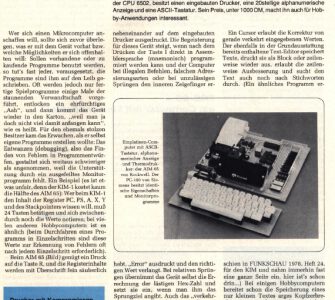
About small SBC systems

1979 KIM-1, AIM 5 and 6502 articles. German, scanned by Matthias, SBC at VzEkC e. V. forum
I have two sets of KIM-1 ROMs. One set is the original KIM-1 dump by Dwight Elvey, in which the filler bytes (unused locations in the ROM) are filled with $00.
Alas the dumps by Dwight have a couple of bit errors and the NMI vector is wrong.
The other set is the result of assembling the source in which the assembler used $FF for the filler bytes. It makes sense to use $FF, since EPROMs can be programmed byte for byte ‘1’ later to ‘0’s.
Functionally the filler byte is irrelevant, so I present here the ROMs with filler byte 00 (corrected Dwight original KIM-1 dumps) and filler byte FF (assembly result).
6530-002 $1C00-$1FFF, filler bytes $FF 6530-002 ROM
6530-003 $1800-$1BFF, filler bytes $FF 6530-003 ROM
6530-002 $1C00-$1FFF, filler bytes $00 6530-002 ROM
6530-003 $1800-$1BFF, filler bytes $00 6530-003 ROM
Small update to KB-9 V1.2 and KB-6 V1.2: the NULL command is back, to ensure binary compatible tokenized saved Basic programs.
Now the USR location is the same in KB-9 V1.1 and V1.2, 2040 and 2041 (see Nils’ blog KIM-1 Basic and the use of assembler subroutines – netzherpes).
In KB-6 V1.2 it is 8254, 8255.
If you downloaded these , please do it again
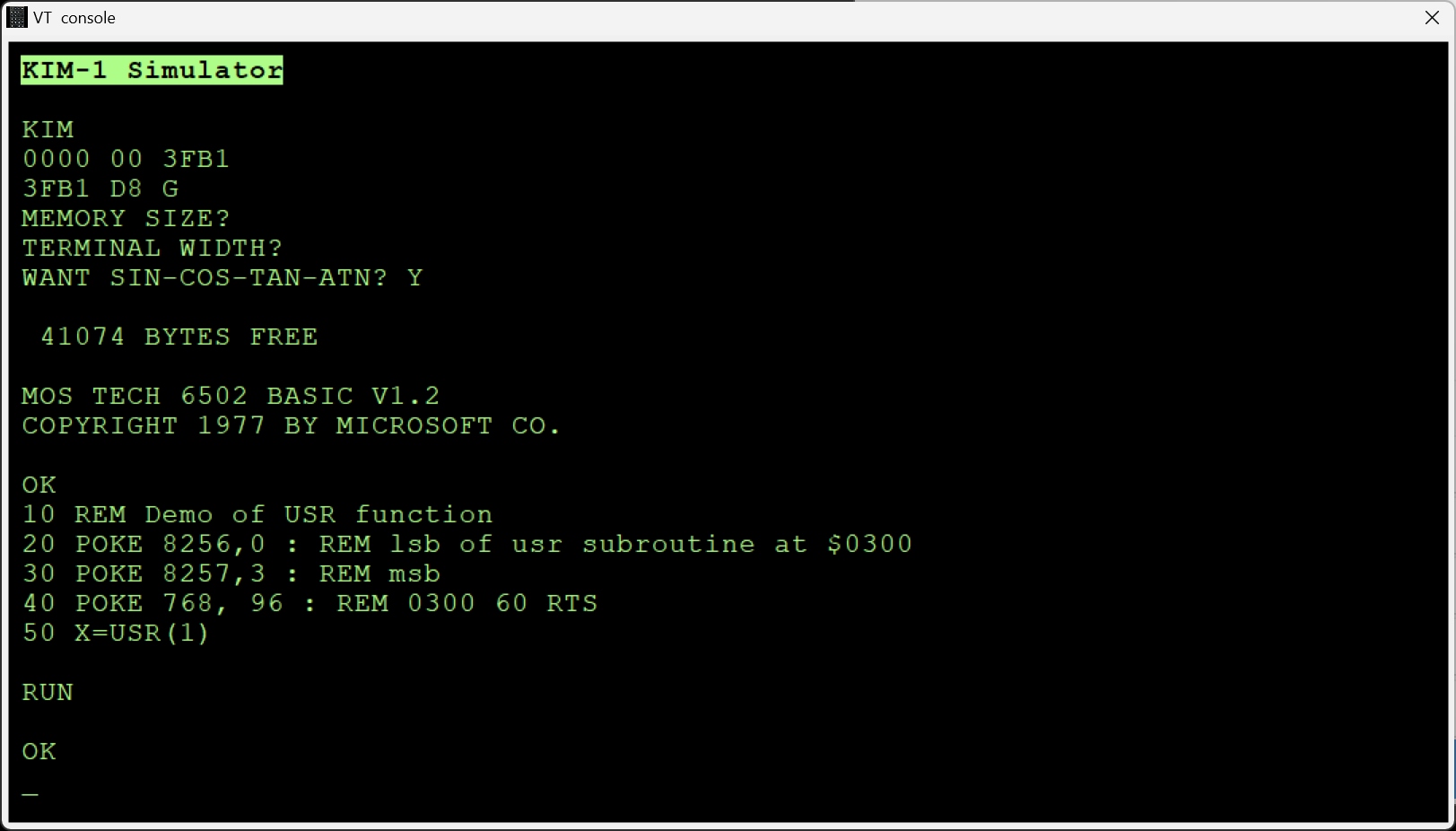
Labu Asabu made 5 units of the AIM65-CPLD-3V3 for sale.
The price is 55,000 yen for a full set + accessories.
Shipping costs will be charged. Overseas customers will be charged customs duties for imports.
Email to info@labo-asabu.com
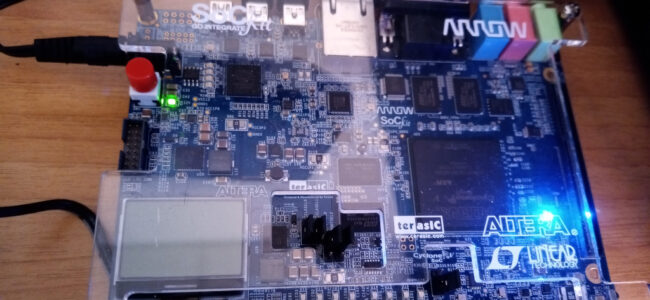
Filippo (shinymetal6) published an alpha version of aim65_quartus, an FPGA clone on his github resource.
Forum discussion on the MisTer forum here.
Here the readme of aim65_quartus by Filippo:
This is an alpha release of a verilog Rockwell AIM65 in an Intel FPGA using the SocKIT board.
The Arrow SocKIT board is a nearly compatible TerASIC DE0 board where MiSTer runs.
This is a MiSTer port on the Arrow SocKIT, and as I have a SocKIT board I used their templates from MiSTer SocKIT FPGA page.
Behind the templates, the structures seem to me very similar, so probably a port on the MiSTer board should be relatively easy, but I don’t have such board.
Basically the aim65_quartus runs like an AIM65 at 1 MHz, has 32KBytes of ram ( who had so much ram ? not me for sure ! ) and excluding printer and tape all the peripherals are in place and runs.
The ROMs come from Hans Hotten funtastic pages, like all the other information I found there.
The 6502 core is the Arlet one, or the Hoglet67 65C02 version based on the Arlet core. This can be selected recompiling the code
The 20 AIM65 alphanumeric displays are routed to a simple video output, some ( quite bad I know ) pictures below.
The MiSTer menu can be used to have the expansion rom with basic, forth and pl/65, again some pictures below
Still with the MiSTer menu the serial port can be enabled, the characters color can be changed and the video can run at full screen
As an additional and in my opinion useful add on, I have implemented a clear screen pressing F4, currently not used on real AIM65.
This too needs a bit of fixing here and there, but when time will leave me to work on it again I will try to fix it

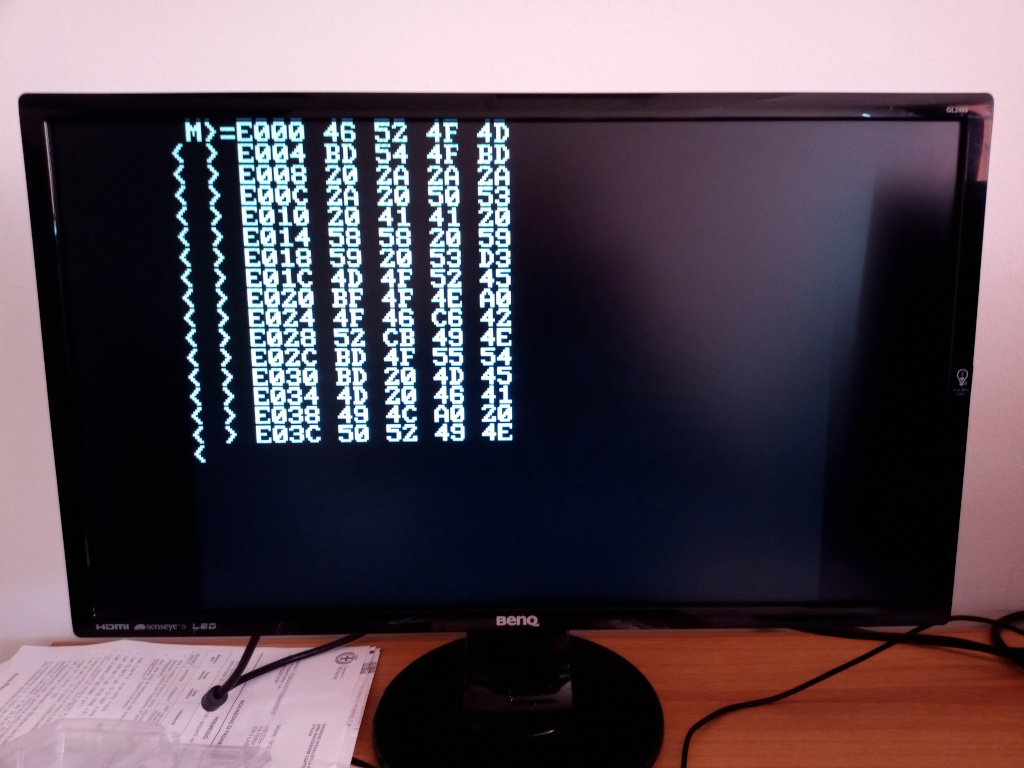
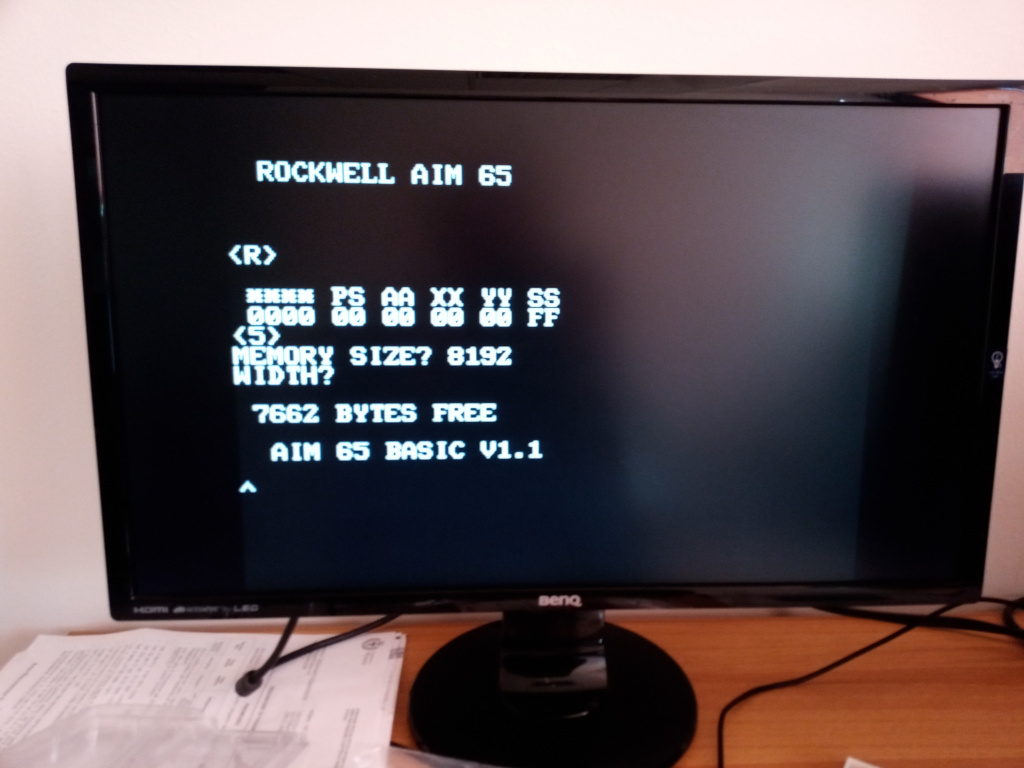
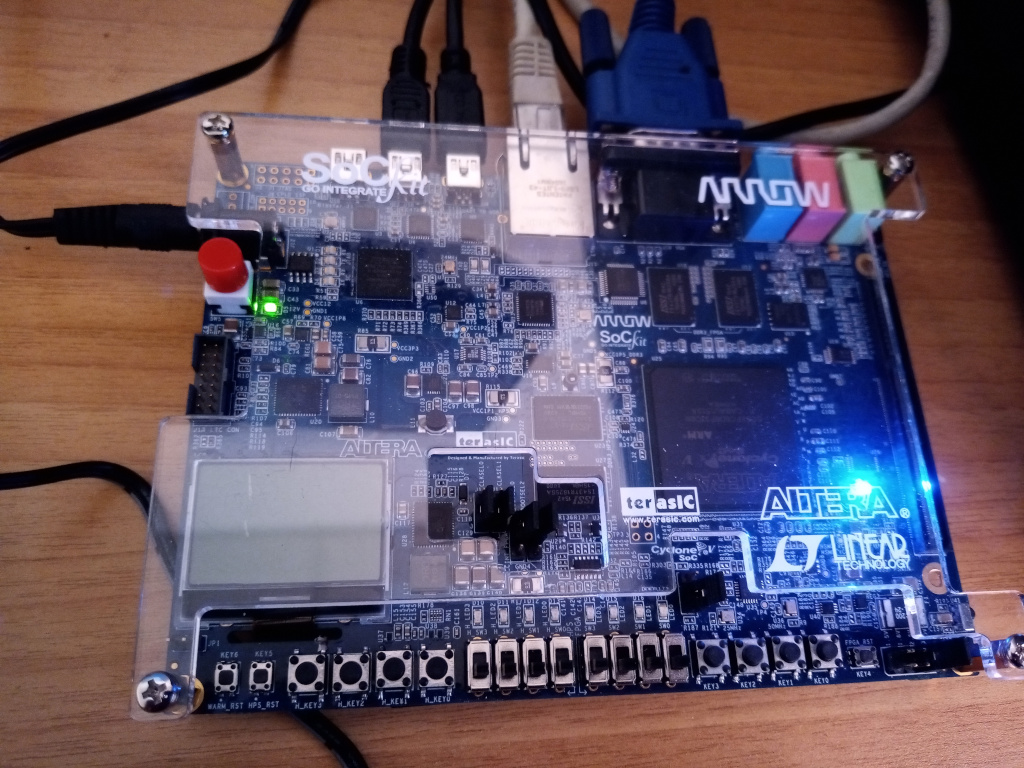
Filippo (shinymetal6) published an alpha version of aim65_quartus, an FPGA clone on his github resource.
Forum discussion on the MisTer forum here.
Here the readme of aim65_quartus by Filippo:
This is an alpha release of a verilog Rockwell AIM65 in an Intel FPGA using the SocKIT board.
The Arrow SocKIT board is a nearly compatible TerASIC DE0 board where MiSTer runs.
This is a MiSTer port on the Arrow SocKIT, and as I have a SocKIT board I used their templates from MiSTer SocKIT FPGA page.
Behind the templates, the structures seem to me very similar, so probably a port on the MiSTer board should be relatively easy, but I don’t have such board.
Basically the aim65_quartus runs like an AIM65 at 1 MHz, has 32KBytes of ram ( who had so much ram ? not me for sure ! ) and excluding printer and tape all the peripherals are in place and runs.
The ROMs come from Hans Hotten funtastic pages, like all the other information I found there.
The 6502 core is the Arlet one, or the Hoglet67 65C02 version based on the Arlet core. This can be selected recompiling the code
The 20 AIM65 alphanumeric displays are routed to a simple video output, some ( quite bad I know ) pictures below.
The MiSTer menu can be used to have the expansion rom with basic, forth and pl/65, again some pictures below
Still with the MiSTer menu the serial port can be enabled, the characters color can be changed and the video can run at full screen
As an additional and in my opinion useful add on, I have implemented a clear screen pressing F4, currently not used on real AIM65.
This too needs a bit of fixing here and there, but when time will leave me to work on it again I will try to fix it




Christian Ortner (mister-freeze at the VzEkC e. V. forum build a SBC with expansion around a TIM IC.
Here is his projects description of the TIM-1 SBC.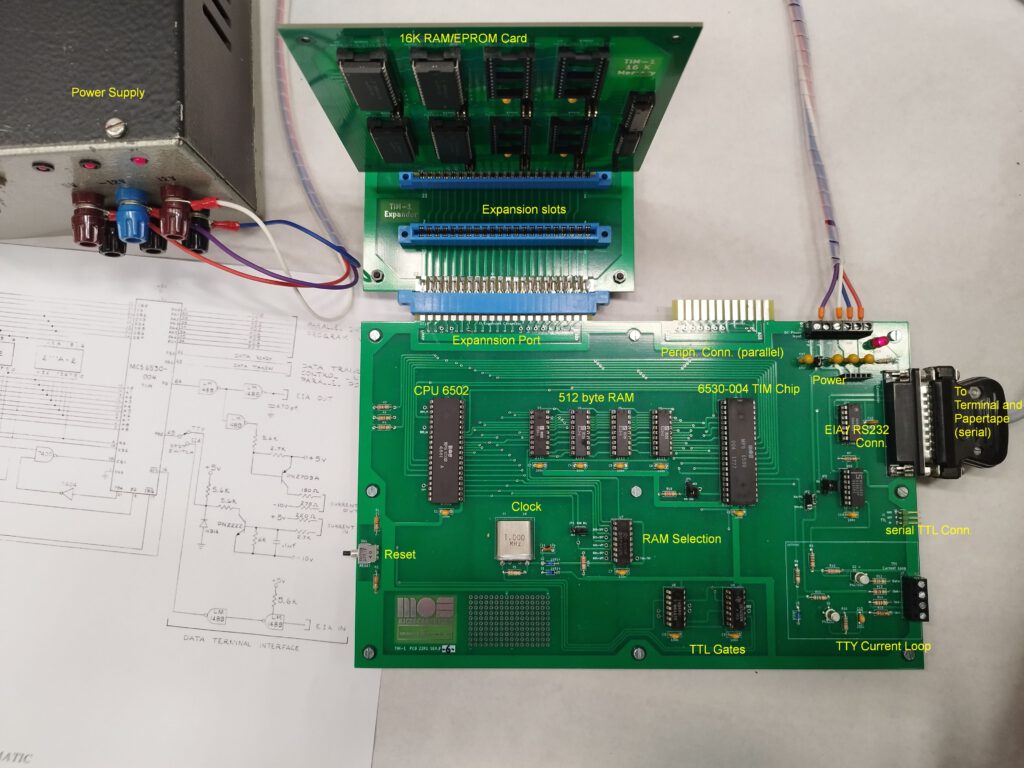 TIM-1 OverviewSchematic, images, hex listing of Lunar Lander!
TIM-1 OverviewSchematic, images, hex listing of Lunar Lander!
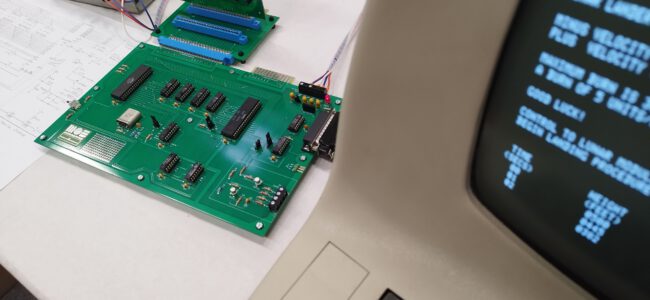
Christian Ortner (mister-freeze at the VzEkC e. V. forum build a SBC with expansion around a TIM IC.
Here is his projects description of the TIM-1 SBC.
Since the TIM chip is actually not available, the TIM-1 is unfortunately only useful for people who are in possession of a 6530-004. But, there is still the TIM-2 😉 The idea for the project came up when I got a few MPS 6530-004 by chance. Actually I always wanted to have an affordable KIM-1, but so far I haven’t found one. I also wanted to learn how to use KiCad.

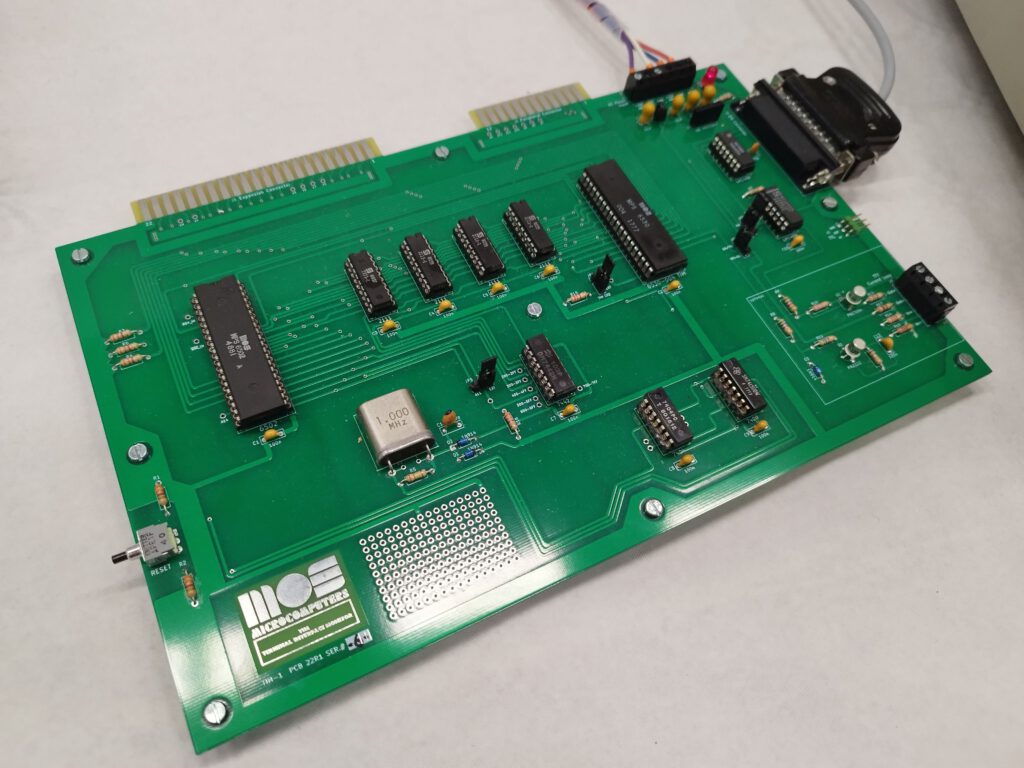
TIM-1
With the TIM-1 project a SBC should be created, as authentic and as exact as possible after the original circuit diagram for the TIM chip of MOS. So for the TIM-1 -at least for the mainboard- only those parts should be used which were included in the MOS schematic and by the way only those parts which were available in the mid seventies. The design is based on the KIM-1 and other SBCs from that time. The layout is adapted to the original schematic, i.e. the parts can be found at the same place where they are placed in the schematic. This makes it easy to understand the system from the schematic. The TIM-1 needs 5 V supply voltage. If you use the EIA (RS232) interface, you have to supply -12V and +12V additionally. For the current loop (Teletype) there is an additional -10V supply required, but it can be assumed that -12V is also possible (maybe a Resistor must be changed). The transistor -according to the original schematic- PN2709A is probably a typing error. The PN 2907A will surely be the correct one. For simplified use with a modern terminal emulator the serial interface is led out laterally as TTl level. This allows the system to operate using only 5V and a USB to TTL adapter. The address decoding for the selection of RAM and RRIOT is incomplete, therefore there is a multiple selection over the whole address range. Therefore, when using the expansion card, an external disabling line for the internal RAM and the TIM chip is necessary to avoid address overlaps. Surely this could have been improved right away, but the TIM-1 should be expandable but, as far as possible, conform to the plan of MOS. The 4 SRAMs 2111 (256×4) on the board provide the user with 512 bytes (page 0 and 1). For small programs and for getting to know the TIM-1 this is very sufficient, but for more extensive programs this is of course too little. Therefore, the TIM-1 has received a simple memory expansion. This external card can be equipped with 8 pieces of RAM or EPROM (probably also modern EEPROM) with standard 2k x 8 (e.g. 2016 RAM and 2716 Eprom). A 4kx8 EPROM 2732 can be used as well, here the upper or lower 2 kB must be selected by jumper.
The operation of the TIM-1 is almost completely covered with the TIM manual from MOS.
Since the TIM chip is actually not available, the TIM-1 is unfortunately only useful for people who are in possession of a 6530-004. But, there is still the TIM-2 😉 The idea for the project came up when I got a few MPS 6530-004 by chance. Actually I always wanted to have an affordable KIM-1, but so far I haven’t found one. I also wanted to learn how to use KiCad.

TIM-1 Overview
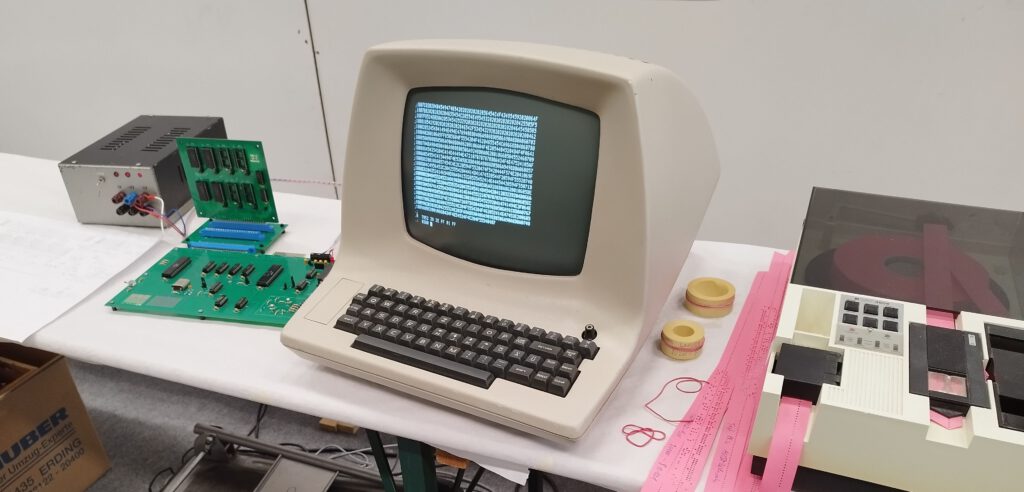
TIM-1 Setup with Terminal and Papertape
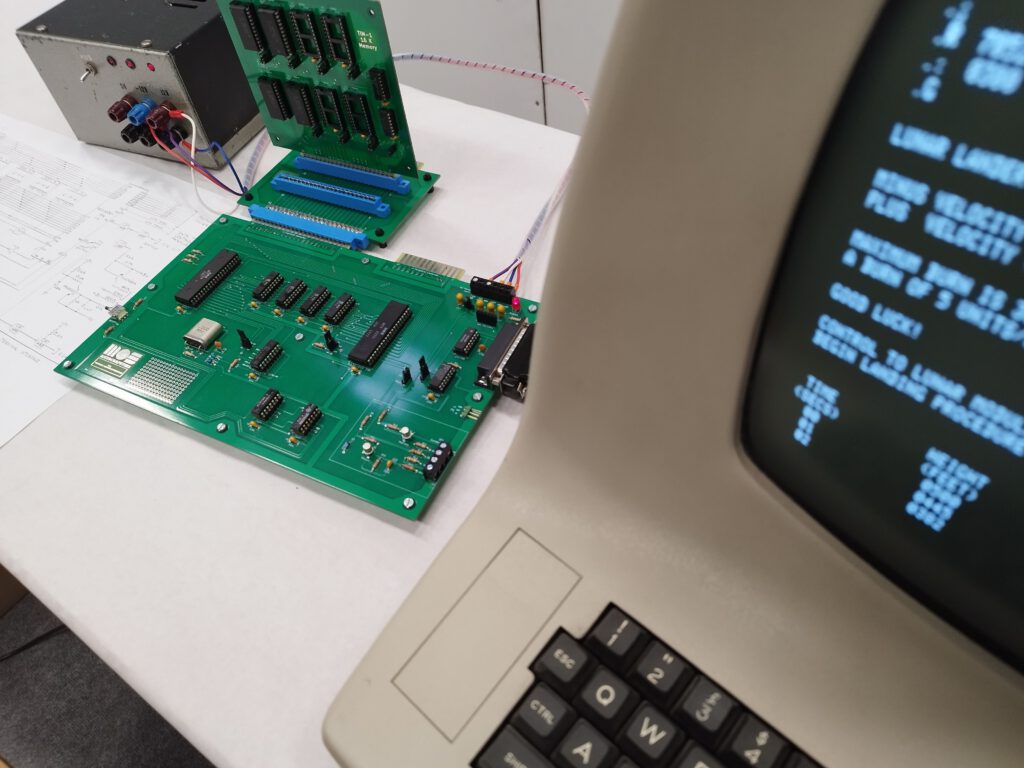
TIM-1 running Lunarlander
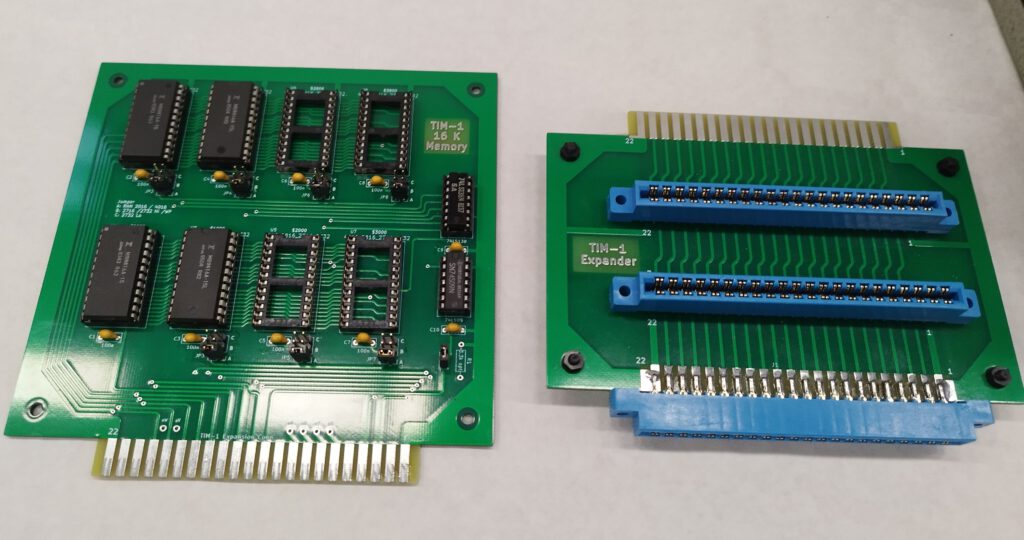
TIM 1 Memory and Slot Card
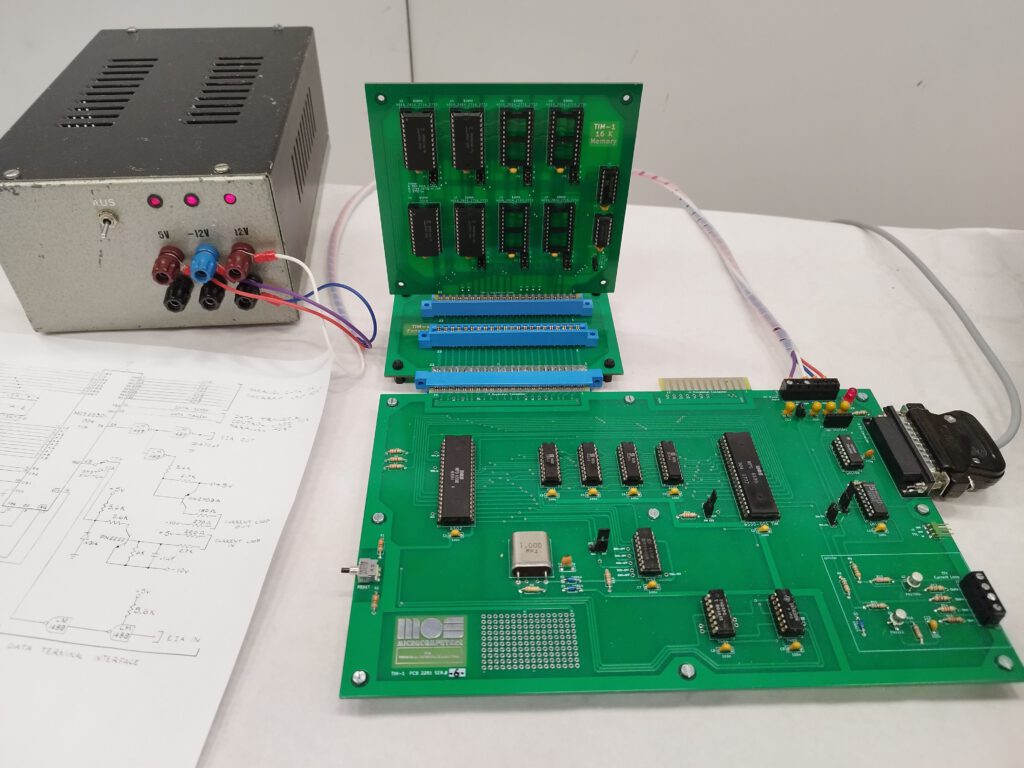
TIM-1 with Expansion
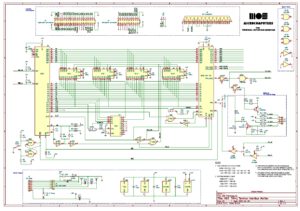 |
TIM-1 Schematic |
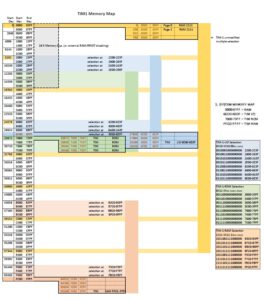 |
TIM-1 Memory MAP |
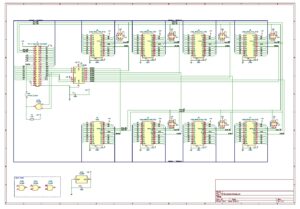 |
TIM-1 Memory Expansion Card |
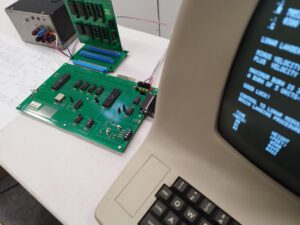 TIM-1 running Lunarlander |
LUNARLANDER for 6502 and TIM |
LUNAR LANDER for the 6502
HEX File from Mark Garetz´s Listing in Dr. Dobb´s Journal (August 1976).
Just typed in with a little debugging by Christian Ortner in 2023
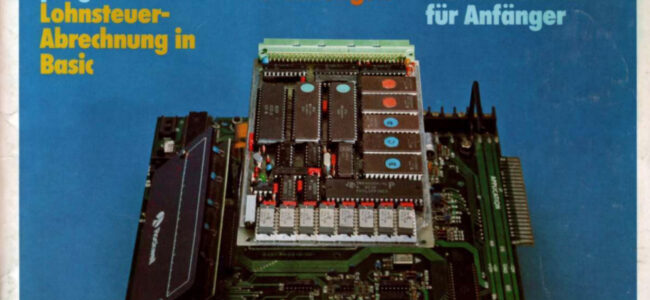
An AIM 65 compatible 65C02 CPU based computer, the MC-65. With a 6532, 6522, terminal I/O, cassette interface, and in theory possible to run the original AIM 65 ROMs.
For AIM 65 ROMS and manuals, see the AIM 65 pages!
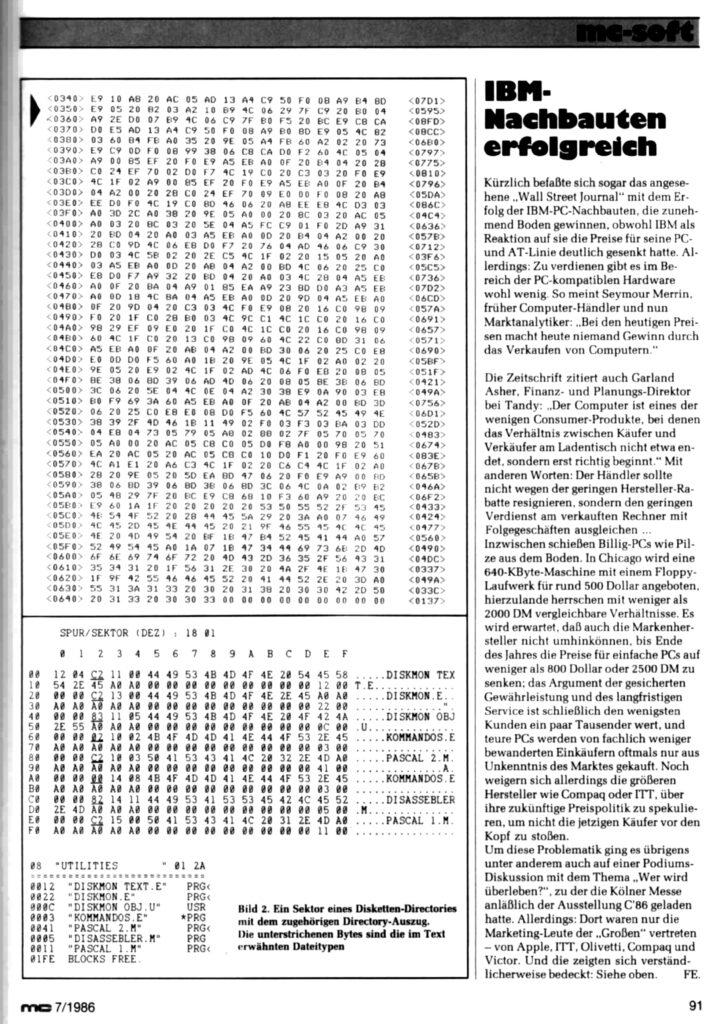 An AIM 65 compatible 65C02 CPU based computer, the MC-65. With a 6532, 6522, terminal I/O, cassette interface, and in theory possible to run the original AIM 65 ROMs.
An AIM 65 compatible 65C02 CPU based computer, the MC-65. With a 6532, 6522, terminal I/O, cassette interface, and in theory possible to run the original AIM 65 ROMs.
For AIM 65 ROMS and manuals, see the AIM 65 pages!